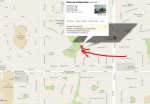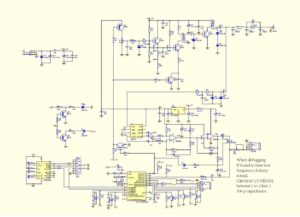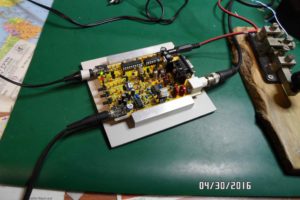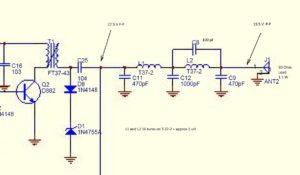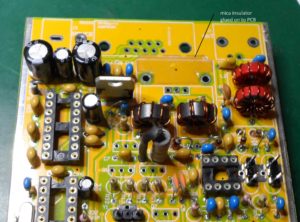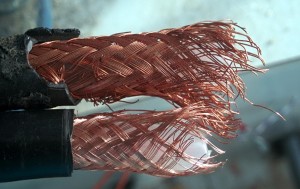- Home
- Registration
- Site Tools
- Articles
- Swap n Shop
- Contesting
- Grounding information for everyone
- History of the Central Alberta Amateur Radio Club
- CAARC owned Repeaters
- Club Repeater Info
- GMT Time Conversion Table
- VE/VA6 Incoming QSL Bureau
- Pine Lake Tornado Friday July 14, 2000.
- Amateur Radio to the Rescue
- CANWARN
- HAM Nation with Bob Heil K9EID
- Net info
- Events.
- ARES
- Links and On line study course.
- Field Day 2019
- Members D/L
- Forum/Swap and Shop
Letter or email of Thanks to Radio World Central
Jun 27th
I won a couple of prizes at the 2016 CAARC picnic that were donated by Radio World. I will be in touch and thank them, but I see they have a page on their web site full of appreciation from various organizations. I think it would be appropriate for someone from the executive or the organizing committee to write an email of thanks. Come to think of it, I bet it has happened already.
John, VA6SJA
Picnic prizes
Jun 20th
Congratulations to Brad VA6BMK, winner of the $500 raffle draw and Brian VE6CKC winner of the $200 raffle draw at the 46th Annual Red Deer Picnic June 19, 2016.
![20160620_113423[1]](https://caarc.ca/wp-caarc/wp-content/uploads/2016/06/20160620_1134231-300x225.jpg)
![20160620_113408[1]](https://caarc.ca/wp-caarc/wp-content/uploads/2016/06/20160620_1134081-1-300x225.jpg) Pictured here (right) John VA6SJA receives from Garry VE6CIA the Yaesu FTM 3200DR and the Celestron weather station draw prizes donated by Radio World Central which he won from the main draw and the Canwarn training draw.
Pictured here (right) John VA6SJA receives from Garry VE6CIA the Yaesu FTM 3200DR and the Celestron weather station draw prizes donated by Radio World Central which he won from the main draw and the Canwarn training draw.
Other prize winners include: Eric VE6HFF winner of an FTM 3100R donated by CAARC, Darren VA6WNG winner of an FTM 3100R donated by VE6HPY and VE6CIA, Rick VE6RAK winner of a Sangean Weather Alert Radio donated by Radio World Central, Pericles VA6PTA winner of the Raspberry PI2 donated by KoHen, and many others too numerous to mention.
Some of the ladies: Sheila (xyl of VE6HFF), Linda (xyl of VE6DE) and Brenda (xyl of VE6BLL) won the 2 beautiful hooked wall art and knitted blanket created and donated by Sylvia VE6SYL.
Special thanks go out to Greg VA6GMC and Karen VE6LDY for the super tasty pig and all the hard work that comes with preparing, cooking and presenting the wonderful pork that was on our plates. Also thanks to all the other donors of the wonderful food at the pot luck.
Chalk up another successful Ham Radio Pignic thanks to all of you that participated and made it all worth while.
2016 Raffle Winners
Jun 20th
First prize, $500- Brad Kolody VA6BMK from Rocky Mtn House
Second prize, $200- Brian Davies VA6BD from Innisfail
Thank you everyone who purchased tickets to support the repeater system. See you next year!

Another QRP CW Kit
May 2nd
Super Rock Mite 40m CW QRP XCVR
I bought this kit for US$16 including postage.  It features a keyer and substantial output power (see below).  I am posting some of the documentation inconsistencies that I found – hopefully this will smooth the build for others.  I bought my kit here   http://www.banggood.com/DIY-51-Super-Rock-Mite-RM-Kit-CW-Transceiver-Shortwave-Telegraph-p-991246.html
caveat emptor
Clarification to Bill of Materials (list of components)
- C22 to C34 0.1 uF (104) disc capacitors. Approximately half of these capacitors tested within 20% of designated value, the rest within 50% of designated value. One capacitor was 0.028 uF. All these capacitors were replaced with quality ceramic components testing within 10% or better of designated value.
- C25 and C26: these are apparently the same capacitor. Documentation inconsistency between versions?
- C13 to C21: 0.01 uF (103) disc capacitors. Less than half were within 20% so I replaced them all with good ceramic capacitors.
- C35: 470 pF is necessary to prevent oscillation in the NE5532. Put it in.
- Install the 100 pF capacitor located on the edge of the board between W2 and U3.
- Y1, Y2, Y3: I used DIP header pins on the board and soldered the crystals to DIP sockets. Cut strips of 3 pins each and remove the center pin for the header on the board. This arrangement will permit you to QSY to 7.030 / 7.040 when you find some appropriate crystals. I found 7.0375 crystals in the same holder at US$0.10 each from Tayda Electronics and they should arrive in the mail any day now. The pins will also let you painlessly try the VFO/DDS mod as per the March 2016 QST article pp 39-44.
- R2, R3: The schematic states that 1 W resistors should be used however 1/4W resistors are supplied. R3 is in series with the emitter lead of the 8050 driver transistor. I looked up the specs on this transistor and it can handle sufficient current to fry a ¼ W resistor. I didn’t have a 1 W 22 ohm resistor in my parts so I used a 2W resistor. It protrudes a bit but fits. DO NOT use a wire wound resistor for R3 . I check inductance of the resistor before using it. For R2 I found a 1/2W 22 ohm resistor to substitute but I am not convinced it is necessary.
- Electrolytic capacitors: The BoM shows 16V electrolytics. My kit supplied 25V capacitors. I strongly recommend that you do not use 16V units with a 12V (13.6V) supply.
- D3: I have used the 1N4001 as a varicap however I also once wasted several hours troubleshooting because a 1N4001 diode somehow prevented crystal oscillation. I found that a BB221 varicap works well so that is what I used.
- L1 and L2: My toroid calculator gives a value of 1 uH for 16 turns on a T37-2 form. The photo in the Engrish instructions shows 17 turns. The LPF is not working well for me as I am seeing a drop of about 12 V P-P between the input and output sides of the filter section. I used tested capacitors, within 2% of given value,  in the filter. If anyone knows how to calculate the optimum values for L1, L2 please send me an email (QRZ.com).Â
- Q2 output transistor. I cut a mica power transistor insulator to fit under the heat sink and superglued it in place. The solder resist under the heat sink is a good insulator but …
- LEDs: the long lead goes into the square pad. I used the green LED for receive and the red LED for transmit.
- For the initial smoke test, after connecting a dummy load to the antenna terminals, I put a 10 ohm 5W resistor in series with the supply. Current draw through the 10 ohm resistor was 85 mA.
- I am getting 1.1 watts out into a calibrated watt meter using a 12 V battery as a supply. As mentioned above, there is definitely a problem with my LPF. Once I get the LPF issue sorted out and up the supply voltage from my 13.6V buss, I expect to see several watts RMS out.
- I used a USB to RS232 cable to connect the Rock Mite to my computer after finding the English version of the software. The software definitely does something but needs further research. Who designs a board with an RS232 interface in 2016? I was lucky my patch cable worked.
On the air:  I received reports of clean keying from several hams within 100Km. A CQ in the evening brought a prompt response from Europe. The QSK works fine.  My straight key was recognized after sending a few V’s.  The side tone leaves room for improvement. I connected the audio out through a small digital audio amplifier module. I am confident that a good CW operator could fill his logbook using this transceiver. For the rest of us I suggest working stations within a few hundred Km during daylight hours – the large number of stations heard concurrently after dark overwhelm my ability to sort out signals by tone.
The PCB layout shows some thought and some nice features. It was designed without mounting holes made to slide into a ready-made case. As may be seen on the photos I had a groove machined into some aluminum bar stock to hold the PCB.
This kit fails its “ISO9002 audit” because of the “instructions†and the poor quality of the disc capacitors supplied. Google does a terrible job translating Mandarin to English.
New volunteer net control operator
Apr 19th
We have a new volunteer for the Monday evening net controller.
Thanks to Maria VA6TFL for your willingness to help with the net.
Any other volunteers would be welcomed to add to the list.
Thanks to the five other net controllers for taking your turn.
Please check Updated Net Controller List under the Net info TAB
73
Bob VE6BLD
CAARC Net Controller Co-ordinator
Canwarn Training
Mar 24th
CANWARN, acronym for CANadian Weather Amateur Radio Network
Please note that CANWARN is not about storm chasing, it is about putting trained eyes at the local level to confirm what is happening under severe weather and communicating that information to the Meteorological Service of Canada.Here’s how CANWARN works in Central Alberta. When the regional weather forecast office (for the prairies this is the Prairie Storm Prediction Centre in Winnipeg, MB) would like to get ground observations of potentially severe thunderstorms they telephone the CANWARN person whom they have listed as the call-out person for the area of interest. In Central Alberta this will be the same people that are listed as ARES emergency coordinators. All Central Alberta and Olds ARES EC’s are trained CANWARN network controllers. The mechanics of how the net operates, local hams are notified and how their weather reports are forwarded to the forecast office are up to the CANWARN net controller. CANWARN Net Control may relay the observations or may elect to use a phone  to put the forecasters and amateur observer in direct contact.Typically, the person contacted by the Meteorological Service of Canada notifies the affected-area CANWARN hams who then radio their weather reports to their CANWARN Net Control Net. Net control then forwards the weather observations to the weather forecast office on a dedicated 1-800 phone number. As the storm moves along, reports would hopefully still come in from either stationary or mobile spotters allowing weather forecasters to continually compare the Carvel and Strathmore Doppler radar to what is being observed at ground level (below the radar horizon) and adjust their weather forecasts, Watches and Warnings accordingly.

Is your coax genuine M17/74 or generic RG-213?
Mar 16th
An informative article on specifications for coaxial cable. Â Download the article by clicking on the link below.
link to download instructions for the IRF 530 PA kit
Mar 14th
Banggood IRF 530 PA Instructions V1.4
A newer version of the instructions incorporating corrections and suggestions from proof readers.  Thanks to K9HZ, KE7HR and ON7AN for their help with this project.  Any errors are mine.  Use at your own risk. Comments, corrections and suggestions most welcome.
Good luck with your build.
Earl, VA6TJ


